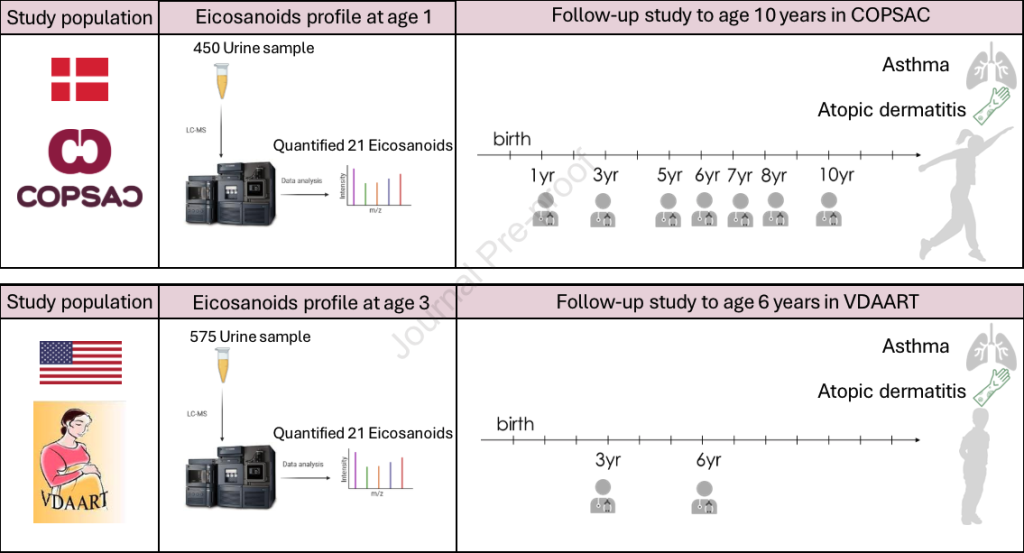
Chen L, Brustad N, Kim M, Luo Y, Wang T, Ali M, Prince N, Chen Y, Chu S, Begum S, Mendez K, Kelly RS, Schoos AM, Rasmussen MA, Zurita J, Kolmert J, Stokholm J, Litonjua A, Weiss ST, Bønnelykke K, Wheelock CE, Lasky-Su J, Chawes B. J Allergy Clin Immunol. 2024 May 31:S0091-6749(24)00565-7. doi: 10.1016/j.jaci.2024.05.022.
Abstract
Introduction: Eicosanoids are lipid mediators including thromboxanes (TXs), prostaglandins (PGs) and leukotrienes (LTs) with a pathophysiological role in established atopic disease. However, their role in the inception of disease is unclear. We aimed to investigate the association between urinary eicosanoids in early life and development of atopic disease.

Methods: We quantified the levels of 21 eicosanoids in urine from children from the COPSAC2010 (age 1 year, n=450) and VDAART (age 3 years, n=575) mother-child cohorts and analyzed the associations with development of wheeze/asthma, atopic dermatitis, and biomarkers of Type-2 inflammation, applying FDR5% multiple testing correction.
Results: In both cohorts, analyses adjusted for environmental determinants showed that higher TXA2 eicosanoids in early life were associated with increased risk of developing atopic dermatitis (P<FDR5%) and Type-2 inflammation (p<0.05). In VDAART, lower PGE2 and PGI2 eicosanoids and higher isoprostanes were also associated with increased risk of atopic dermatitis (P<FDR5%). For wheeze/asthma, analyses in COPSAC2010 showed that lower isoprostanes and PGF2 eicosanoids and higher PGD2 eicosanoids at age 1 year associated with an increased risk at age 1-10 years (p<0.05), whereas analyses in VDAART showed that lower PGE2 and higher TXA2 eicosanoids at age 3 years associated with an increased risk at 6 years (P<FDR5%).
Conclusions: This study suggests that early life perturbations in the eicosanoid metabolism are present before the onset of atopic disease in childhood, which provides pathophysiological insight in the inception of atopic diseases.
